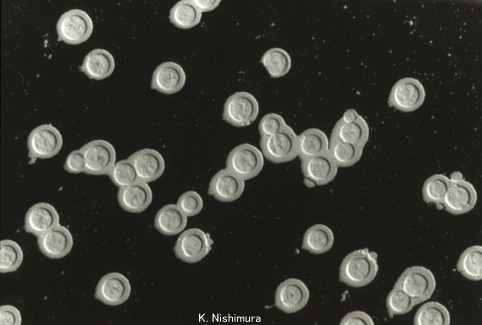

Detection of cryptococcal antigen by immunodiagnostic tests of the serum and the CSF provides a definitive diagnosis of the infection.

The culture of the infected fluid yields cream-colored colonies in about 3-7 days, while staining with India Ink permits rapid identification of the Cryptococcus in direct CSF smears. Analysis of the fluid usually reveals a low white blood cell count, low glucose, and elevated protein, but could also be normal in approximately 25-30% of the cases. CSF analysis, culture, staining, and immunodiagnostic tests of CSF are the primary diagnostic tests that are performed to diagnose meningitis caused by Cryptococcus. K151).Patients who present with symptoms of central nervous system dysfunction are evaluated with radiographic imaging of the brain to rule out the presence of elevated cerebrospinal fluid pressure. Note: Production of capsular material may be increased by cultivation in a 1% peptone solution (Peptone Broth, Cat. Further dilution with water is not recommended. a drop of the sediment to a slide and add a drop of India ink. Transfer an equal amount of sediment and India ink i.e. Remove the supernatant fluid and mix the sediment. Using reduced examine the smear microscopically (100X) for the presence of encapsulated cells as indicated by clear zones surrounding the cells. Cryptococcus capsules in Nigrosin preparation Watch on Procedure of India Ink Preparation Centrifuge the CSF for 5 to 10 minutes. The samples were cultured on Sabourauds Dextrose Agar (SDA). The preparation should be brownish, not black. Results: Mean age of the patients was 32.45 years. These were: direct microscopy of india ink preparations, acridine orange staining followed by fluorescence microscopy and detection of cryptococcal capsular. An alternative stain was sought to assist in microbiological diagnoses of cryptococcal. Place a cover slip over the smear and press gently. Accessing India ink in rural Uganda is difficult and costly. Mix the specimen with a small drop of India on a clean glass slide. The Gram stain revealed gram positive budding yeast cells an India ink. This product is used in conjunction with other biochemical and serological tests to identify cultures of isolated organisms. Cryptococcus neoformans was isolated from the lesion and no underlying disorder. It is best known for causing a severe form of meningitis and meningo encephalitis in people with HIV / AIDS. A dye, called India ink, is added to a sample of CSF fluid, and if the fungi is. Cryptococcus neoformans is cosmopolitan and is the most prominent medically important species. Specimen Collection: Specimens should be collected in sterile containers or with sterile swabs and transported immediately to the laboratory. A diagnostic test used to detect the cryptococcal organism C.

Organisms that possess a polysaccharide capsule exhibit a halo around the cell against the black background created by the India. Hardy Diagnostics India Ink is recommended for use in the identification of Cryptococcus neoformans.Ĭryptococcus neoformans, because of its large polysaccharide capsule, can be visualized by the India stain.


 0 kommentar(er)
0 kommentar(er)
